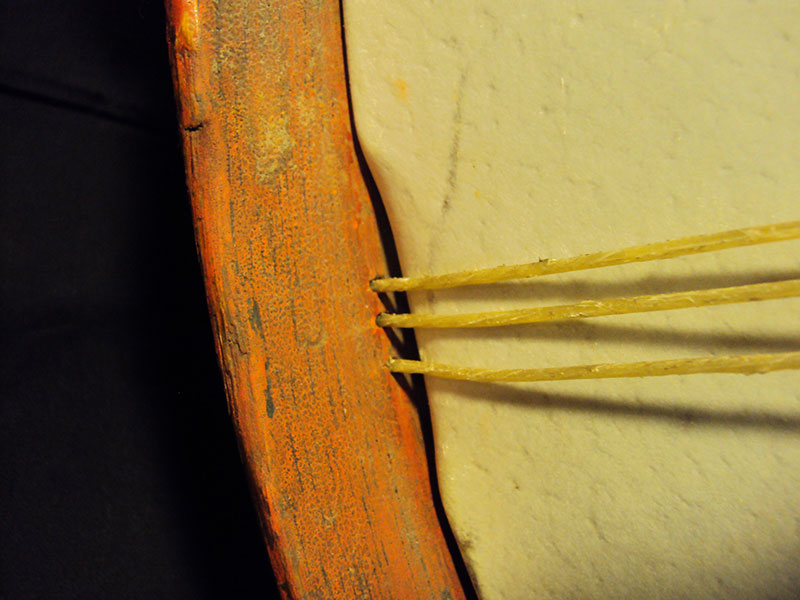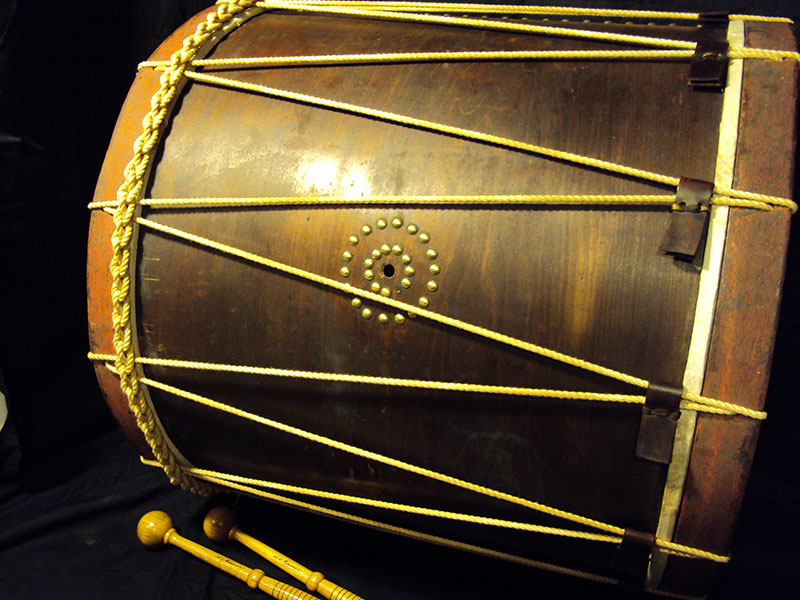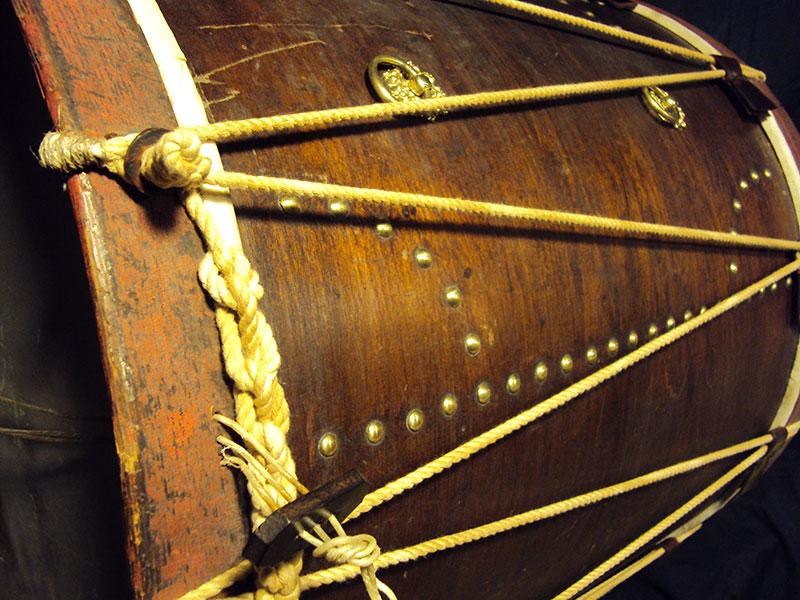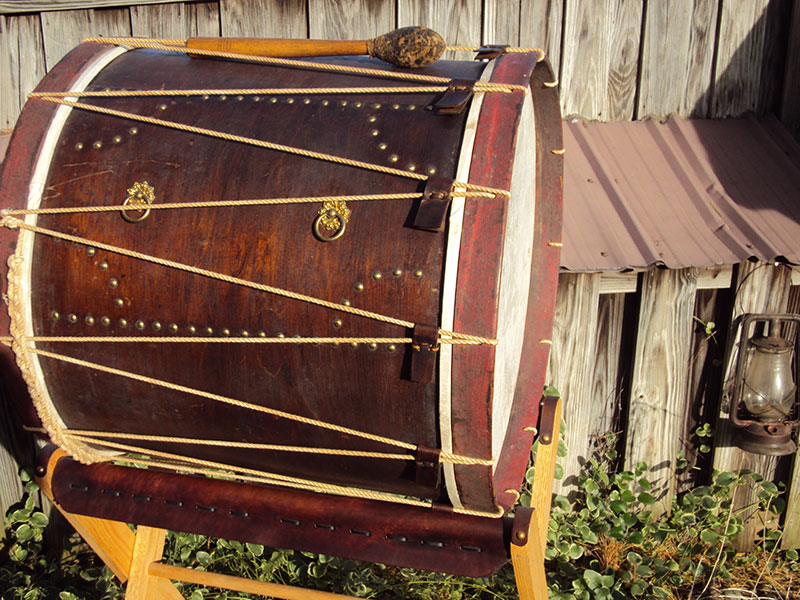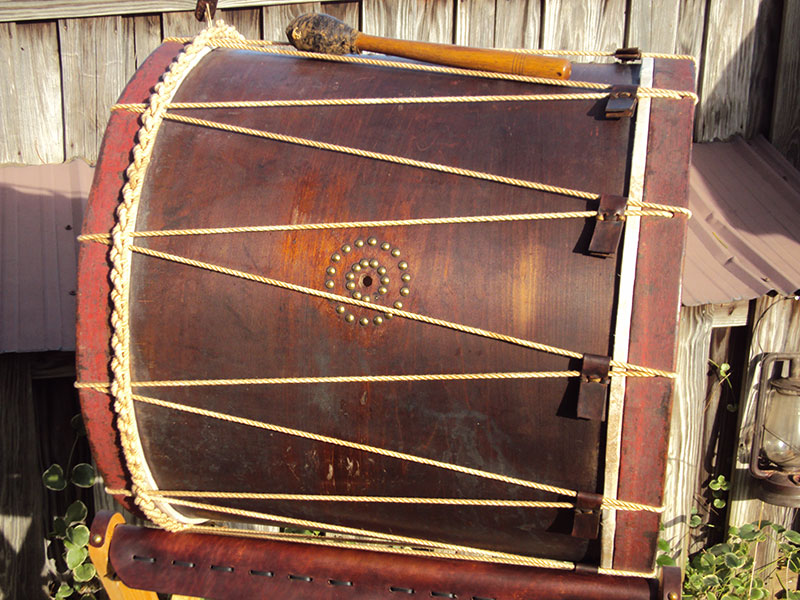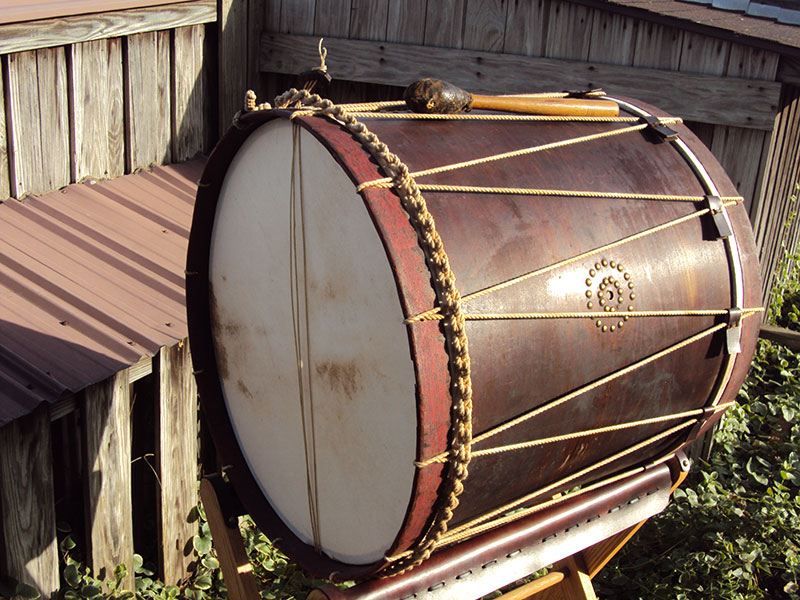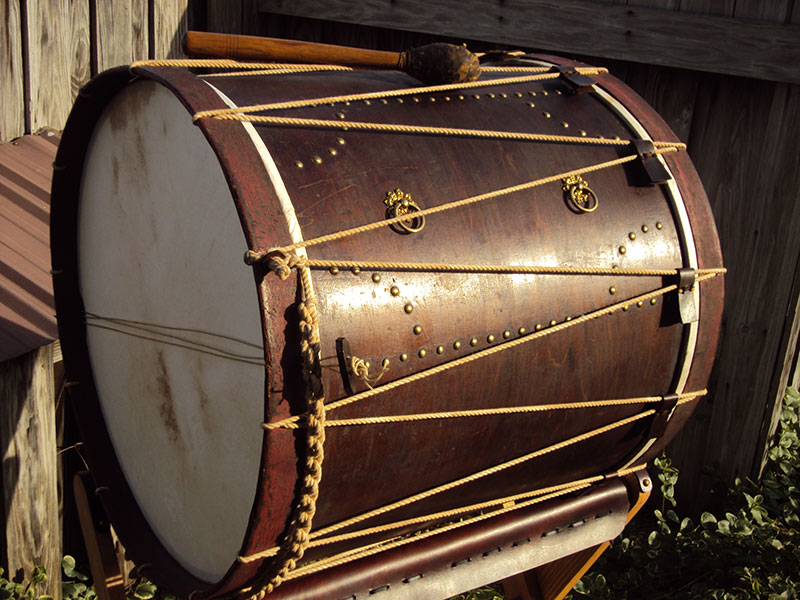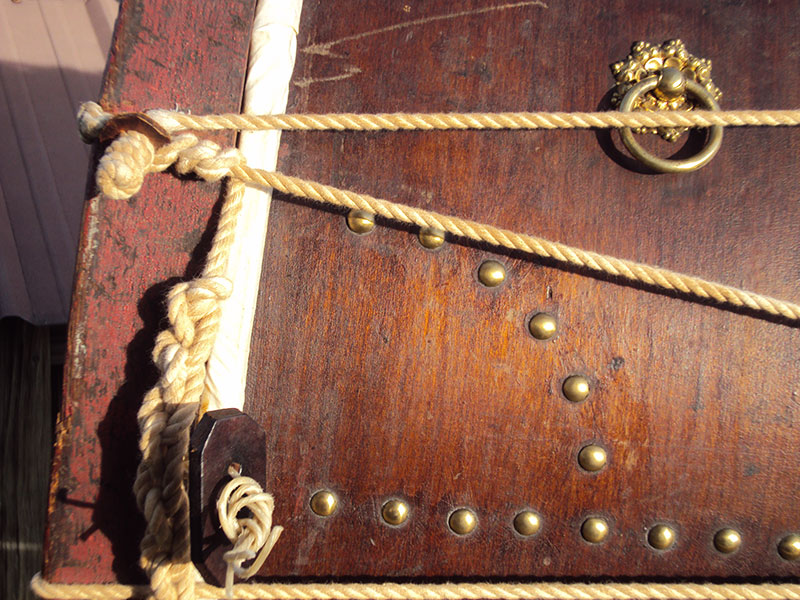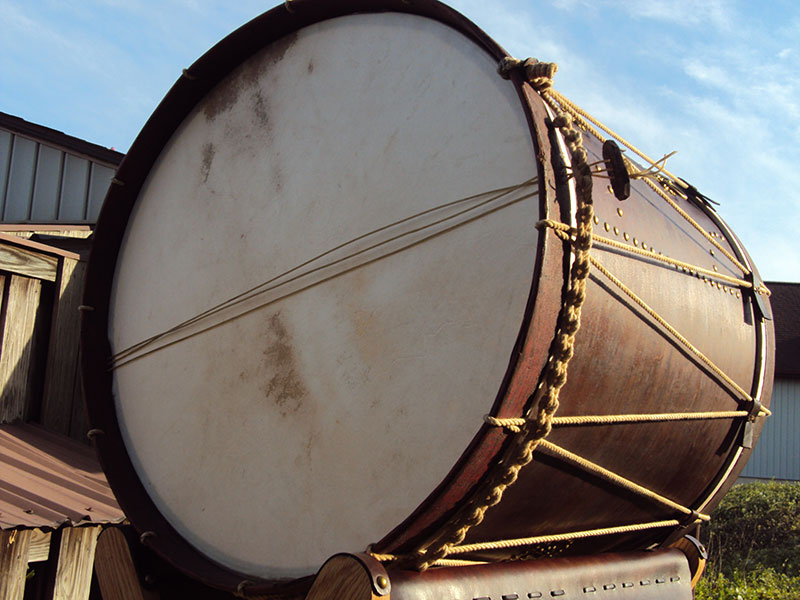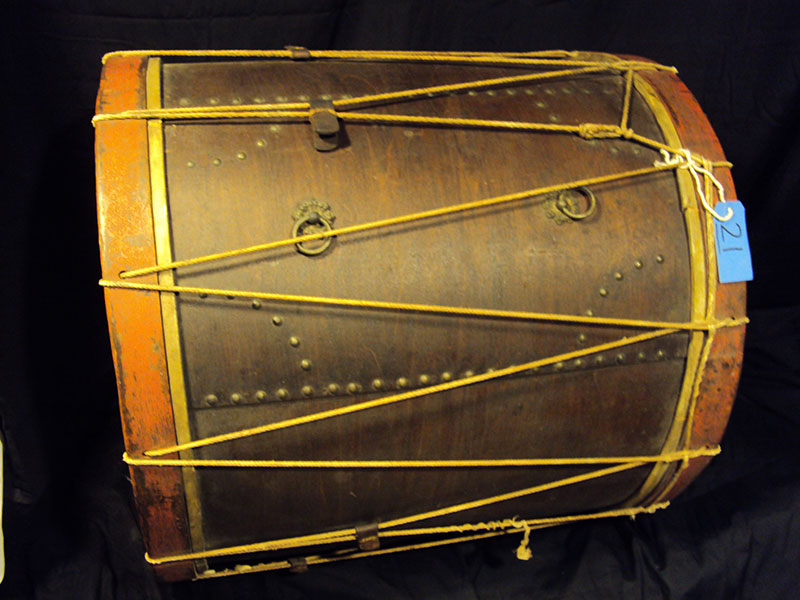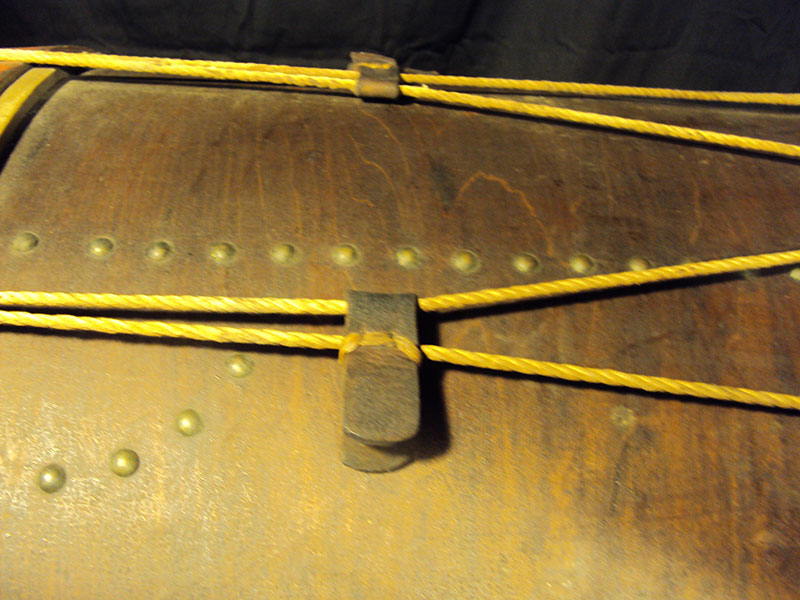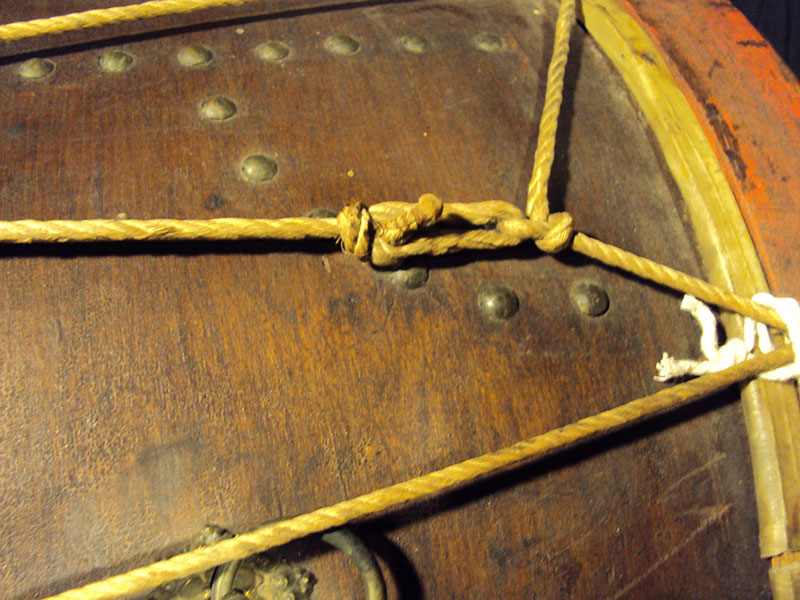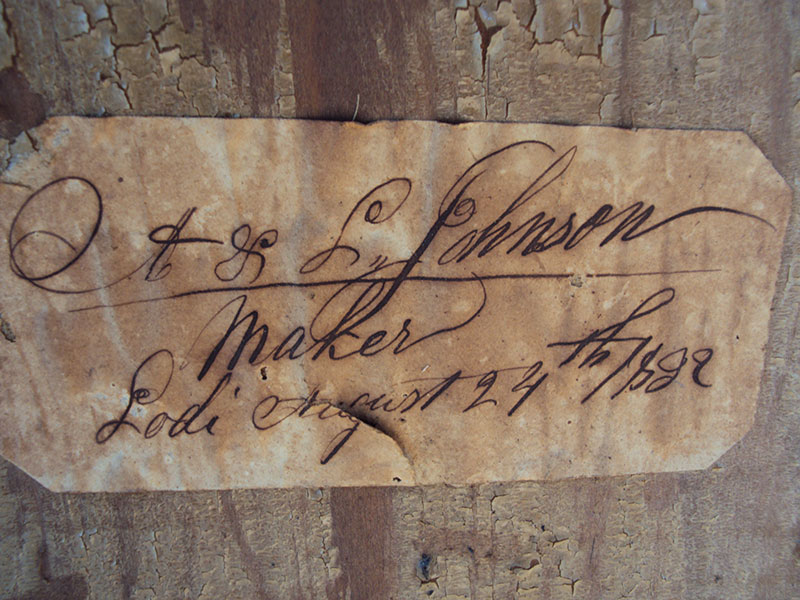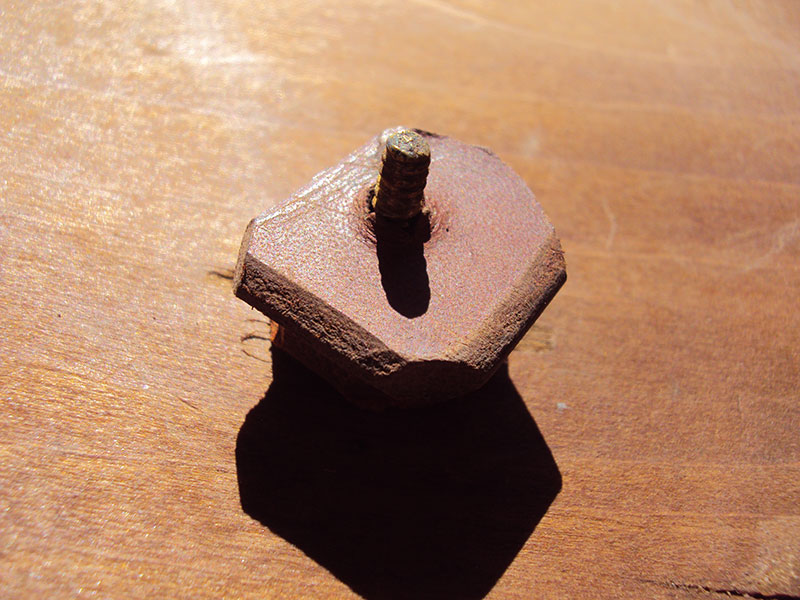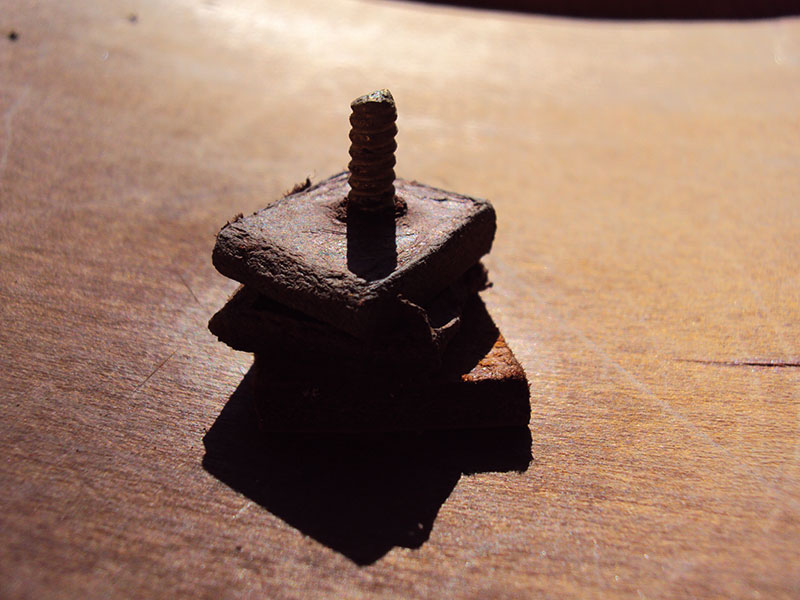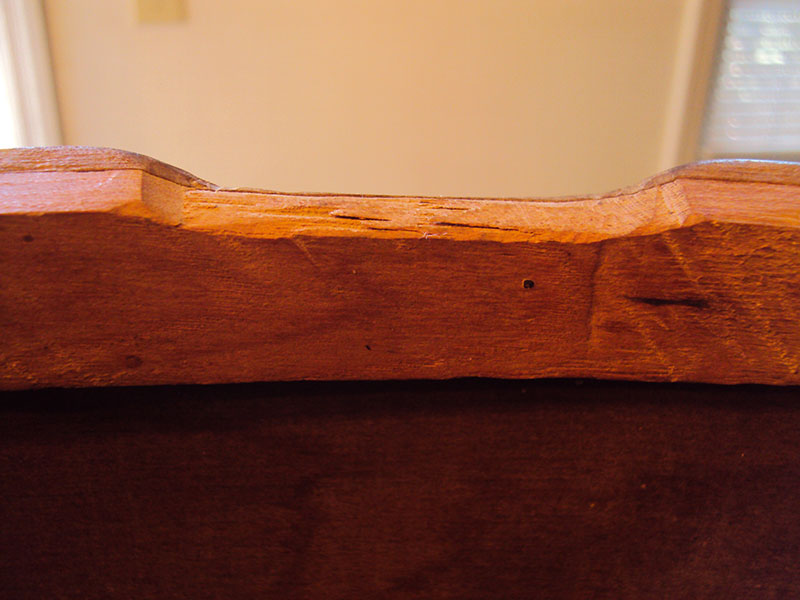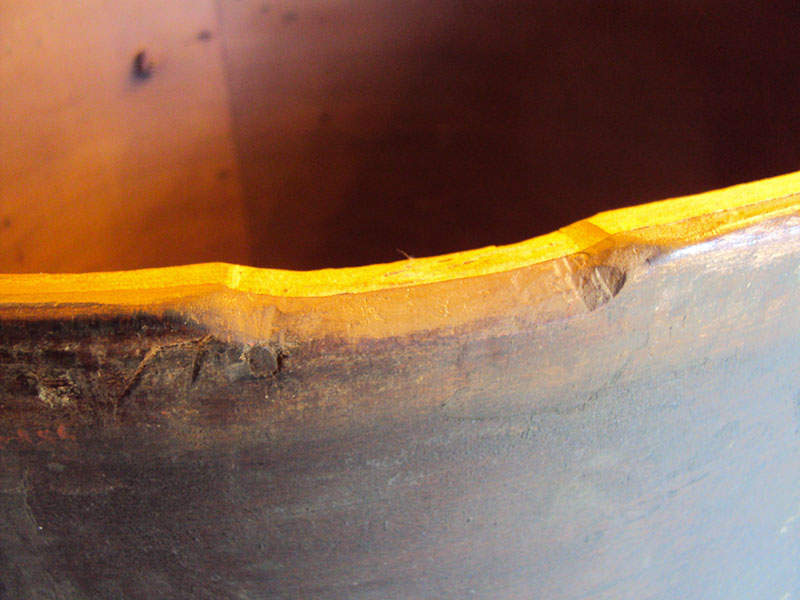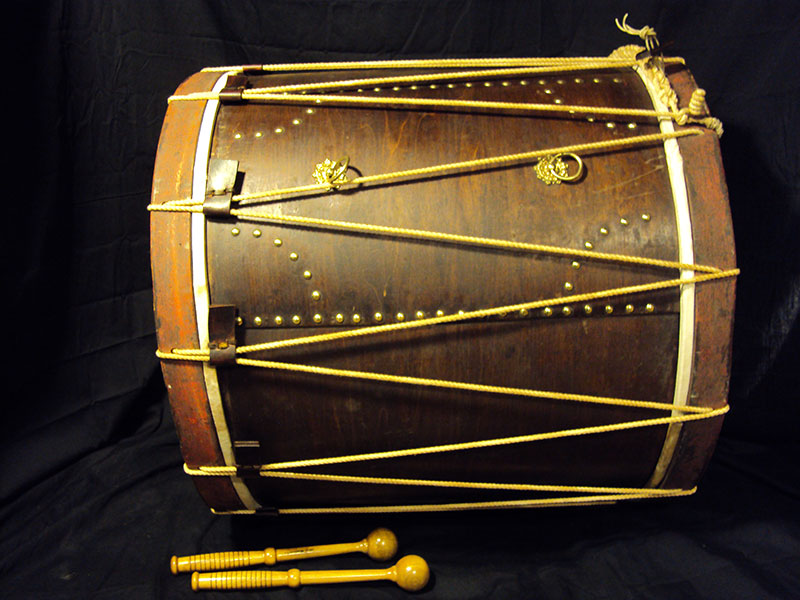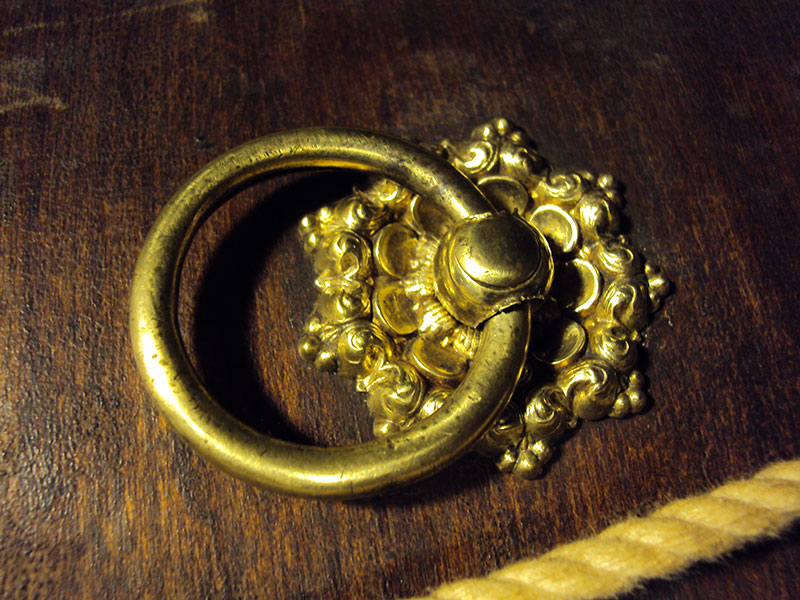This is Master Blaster: A true rarity of ingenuity and craftsmanship, so perfect and precise, it can hardly be ignored. This two foot square canon was built in the summer of 1802 and was made for use with snares. It’s been an anomaly since it’s restoration in 2012 and has been baffling members of the historical antiques and vintage drum communities since it came to light; offering more questions than answers.
Maker: O. & H.L. Johnson Dated: August 24, 1802 Dimensions: 22” (w) x 24”(dia.)
As with many drums of the 18th and 19 centuries, this full-barrel bass was more than likely hand crafted by a trunk and furniture maker, or possibly even a coach and carriage builder. The main tack pattern surrounding the sling attachments is very common to that which was used on the lids of storage or travel trunks of the era. A drum maker would normally have his own unique tack pattern to identify his work as opposed to a commonly used utilitarian tack design familiar to trunk builders. A secondary brass tack pattern of a circle within a circle is located surrounding the unreinforced vent hole.
Within the main tacking are two solid brass sling attachments for use in carrying the drum in the traditional manner of a marching bass drum. Each brass ring is attached to a hand-made brass bolt with hand-turned screw treading. They are held in place inside the drum with three leather nuts screwed onto the threaded bolt. Both bolts pass through a very ornate, cast brass rosette that rests on the shell. These rosettes were a very popular accessory of the furniture trade during the American Federal Period.
The dark stained shell is made of a quarter inch of solid maple and is one of the most perfectly cut and planed pieces of wood I’ve seen used to make an early drum. It’s almost perfect! The scarf joint is planed down to a very straight and thin one sixteenth of an inch. Initially held in place by natural glue and small hand-cut iron nails, the outside edge of the joint coincides with the edge of the brass tack pattern, as does the inner edge, adding to the strength and appeal of the shell.
Both maple counter hoops are almost two inches high and an impressive quarter of an inch thick, extending the over-all width of the drum to over 25 inches. They retain much of the original red sponged paint, suggesting some sort of military use or intent. Each is joined by a scarf joint and held together by glue and hand cut iron nails. The sheer size helps to create a very strong hoop needed to support the secret this drum has held quietly for many years. Located on one of the counter hoops are six mysterious small holes drilled through the wood; three in a group on each side, directly opposite.
When this drum came into the collection it was in a desperate state of disrepair. Inspection of the hoops and what could be seen of the shell indicated great integrity in those areas. The tacks were tarnished to a blackened appearance as the drum appeared to be pleading to be restored. During disassembly the ropes and what was left of the heads and leather ears literally began to fall apart. Upon final disassembly and further inspection the most unexpected feature of a bass drum was found: two hand-cut snare beds approximately one and a half inches wide
The snare beds coincide with the small holes drilled into the one counter hoop. Three individual snares were run through the hoop and tied off with or without the use of a leather snare butt. This was a way some of the early drum builders applied the snares before and during the Revolutionary and Federal Periods. It was not a very common practice, but several examples survive.
A bass drum made for use with snares is a very rare find indeed. Some of the early side drums of the seventeenth and sixteenth centuries were the size of barrel bass drums. They were carried and played on the (usually) left side and high under the arm. However, with the presence of the two sling attachment rings on the shell, it appears fairly obvious that this drum was carried and played in the traditional manner of a bass drum. This only further complicates the reasoning for the snares. Snares traditionally raise the drum pitch by about an octave and aid in the penetration of the sound in louder environments. One can only speculate that the player of this already extremely loud drum wanted to make sure he was heard above all else: very possibly part of an artillery battery.
Inside the shell directly opposite the vent hole is a hand written makers label. The paper is parchment and is applied with natural glue. It’s hard to say if the “splattering” behind and around the label is the remnants of liberally applied glue or rather an earlier applied and removed paper label. The label was written with what appears to be a traditional quill pen and iron gall ink, which was the common ink of the era. This was also known as writing with or in “iron pen.” The label reads: “O. & H.L. Johnson / Maker / Lodi August 24th 1802.”
The firm of O. & H.L. Johnson does not appear in any records found as having any government contracts and do not appear in any other records reviewed thus far. Further, there are no records found indicating that they were drum makers and there are, as of this writing, no other drums by them known. The notation of “Lodi” is assumed to be the place of the firm’s shop. In researching Lodi, two locations were found that may make sense. A town of Lodi was found in the state of New York and one in the state of New Jersey. Both towns were incorporated several decades after the 1802 date, which may shed some light on why no further records are present for the maker.
As to the completeness and accuracy of the research, one has to fall back on a point of misconception at the heart of the everyday view of history. History is not “what happened in the past.” Rather, it is the act of selecting, analyzing, and writing about the past. It is something that is done, that is constructed, rather than an inert body of data that lies scattered through the archives and libraries. It is an important distinction in recognizing the confusion of the question as to if a history is “complete.” Histories and research tend to be an on-going affair. With that being said, we must turn our attention back to the writing style of the maker’s label and the over-all theme of the drum in general to make a more pointed and accurate statement as to the true period of the drums creation.
Much discussion has ensued over the exact year of date as written on the label. Some suggestions have the year as “1892” instead of “1802.” A casual look might reflect that opinion. In determining the intent of the writer of this label we must first look at the style of writing of the times and the manner in which it was applied. Also, we must look to our own habits of writing. Much time was spent analyzing the writing on this label by several experts in antiques and hand writing. Of course, we must also look at the drum itself for the clues present. The over-all theme of this drum does not endear itself to any drum making styles that were present during the late 1800’s; nor does the label. Everything about this drum points to (at least) the American Federal Period. The date as written is: 1802.
Restoration included two new skin heads, cotton rope, twelve leather ears made as close to the originals that were present on the drum as possible, a leather rope washer, two leather snare butts and three gut snares. Integrity of the shell, counter hoops and both flesh hoops were in very good order. An all-around cleaning and the shining of the brass was all that was needed to bring this rare anomaly back to playing condition.
Being very large and heavy, one can imagine that the player had help from another bandsman on the front-end to help support the weight when being carried as was often the case with these barrel-sized instruments. When tensioned-up the drum is extremely loud and low-end, but with the snares applied, it just blasts right through. Why this bass drum was made with snares will certainly remain somewhat of a mystery. It is one of the best made drums of the early period of American drum making I’ve ever seen; created by a Master Wood Craftsman applying his skills to drum making. This is Master Blaster!
From Lancaster County, PA…….Thoughts from the shop.
Brian Hill

